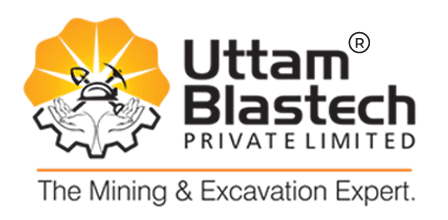On-site Investigation
Bringing Expertise & Precision to Exploration, Estimation & Excavation
In a complex web of studying ground strata, a combination of intrusive and non-intrusive studies are used to examine ground features and characteristics. Uttam Blastech’s expert consultants help you conduct these studies using cutting edge technologies and their experience across varied terrains.
Intrusive testing
Percussion & DTH Drilling |
Percussion drilling is employed when auger or wash boring is not possible in very hard soil or rock. Nevertheless, it can also be used in most soil types. Down-the-hole (DTH) drilling can be employed in very hard rock (and especially fractured hard rock). The drilling string provides the necessary force and rotation to the hammer and bit, as well as compressed air or fluids to the hammer and for the flushing of cuttings. This arrangement also allows for much deeper percussion drilling.
Typical applications of drilling include Blast hole drilling, Mineral investigation, slope stabilization, building pit supports, braces and anchored retaining walls. |
Non-intrusive testing
Electrical Resistivity Studies |
Velocity Studies |
Ground Penetrating Radar Studies |
| In all electrical resistivity surveying techniques, a known electrical current is passed through the ground between two (or more) electrodes.
This is used to map sand & gravel deposits, understand the type of strata and their electric properties, and in fault studies. |
The objective of a seismic refraction survey is to determine the configuration of the bedrock surface and the compressional wave velocities of the underlying materials.
Initially, seismic refraction surveys helped map salt domes in the early days of oil exploration. They are now routinely used in foundation studies for construction projects and siting studies, fault investigations, dam safety analyses, and tunnel alignment studies. |
Similar to seismic surveys, Ground Penetrating Radar (GPR) surveys have the same general characteristics but higher resolution.
They are used for a variety of shallow geotechnical investigations, including the locations of pipes or other buried man-made objects such as timbers, very high-resolution mapping of near-surface geology, and detecting cavities, and leakage in dams. The applications are limited by the very shallow penetration depth of the very high radar frequencies. |
